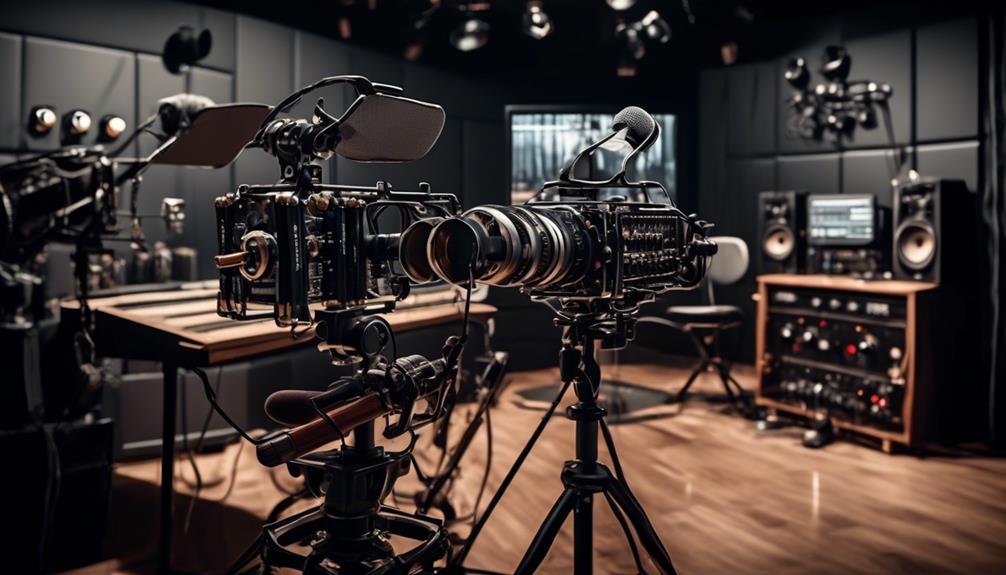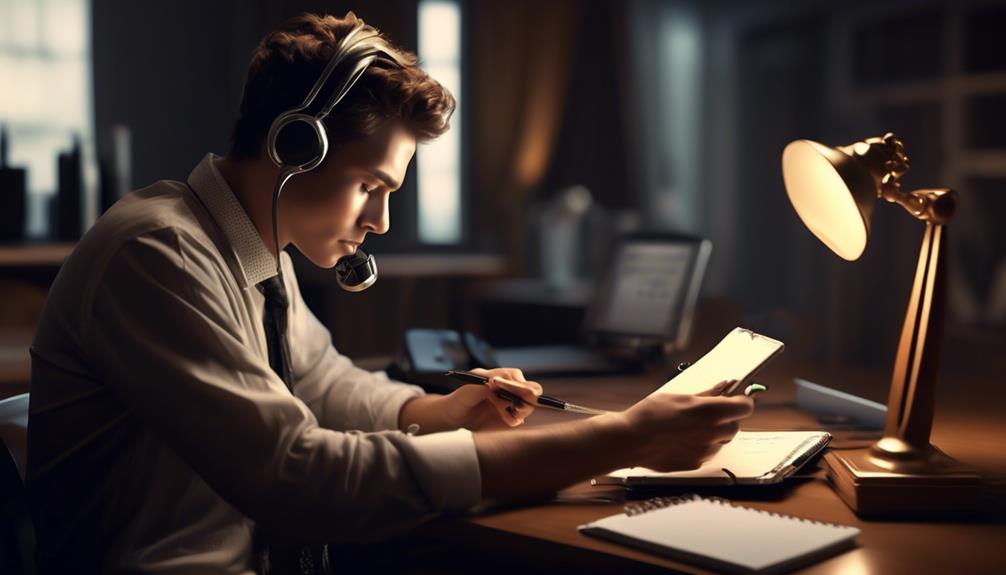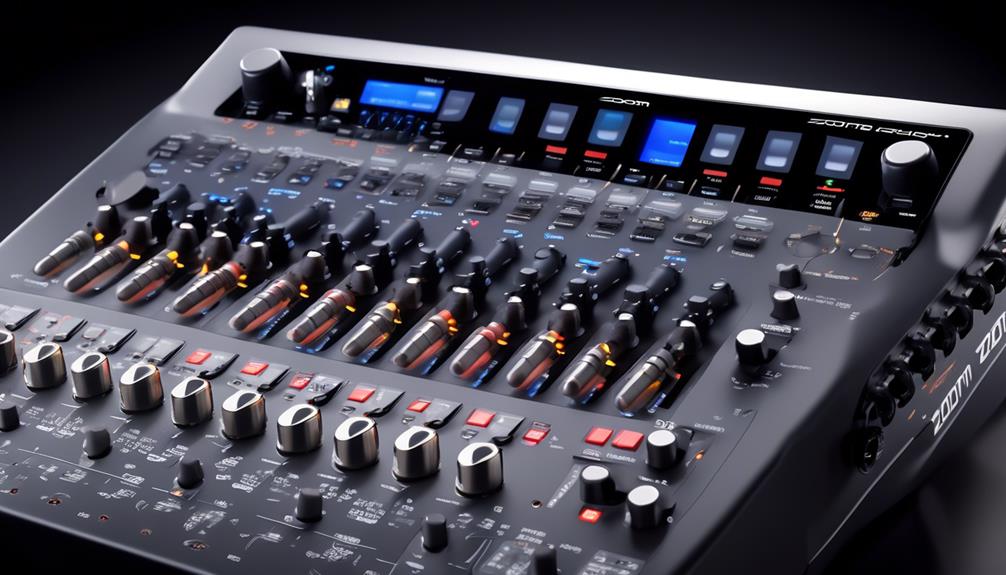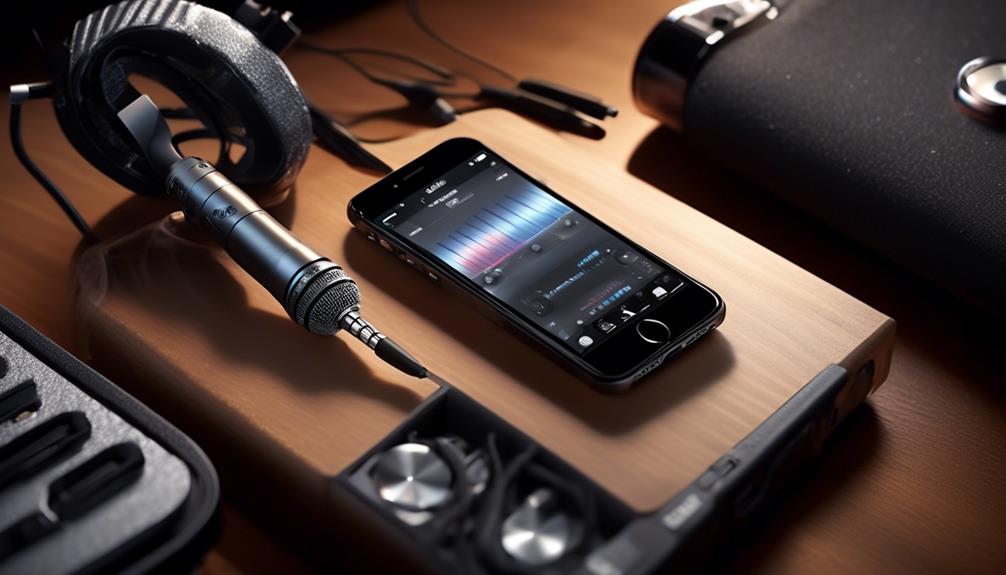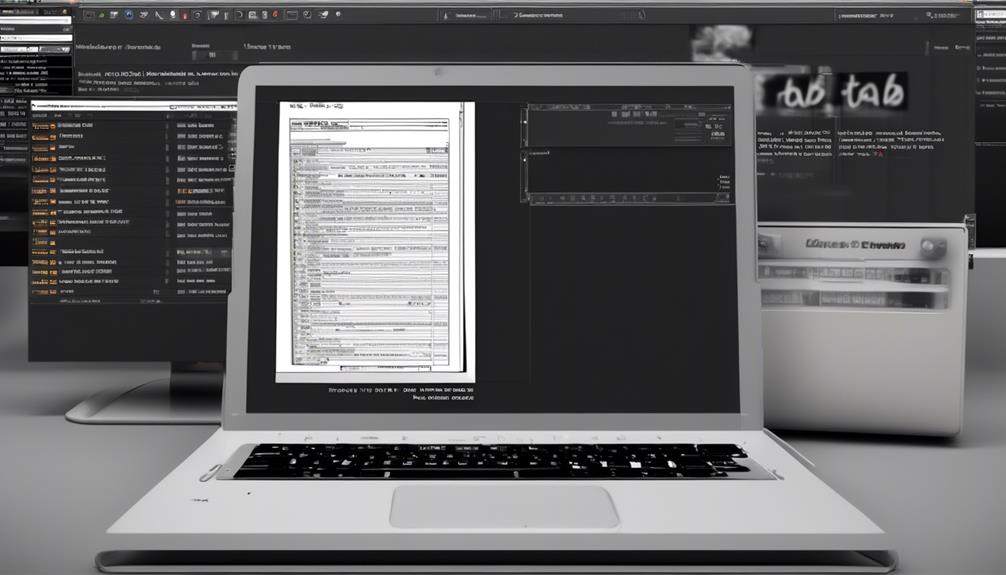When reflecting on the sounds from our beloved movies, we are reminded of how the audio has the power to immerse us in the heart of the story, be it the gentle rustling of leaves in a mysterious forest or the gripping dialogue in a tense confrontation.
The choice between recording in stereo or mono for film can significantly impact the way these sounds are captured and experienced by the audience. But which one is better?
As we explore the intricacies of stereo and mono recording for film, we'll uncover the nuances that can make all the difference in creating an immersive and captivating auditory experience for the viewer.
Key Takeaways
- The choice between stereo and mono recording depends on the specific sound source and desired outcome.
- Stereo recordings provide an immersive experience by capturing ambience and background noise realistically.
- Mono recordings provide clear audio and allow for easy panning and precise sound placement in post-production.
- The decision between stereo and mono recording significantly impacts sound design in film.
Understanding Stereo and Mono Recording
Understanding stereo and mono recording is crucial for capturing high-quality audio in various recording environments. When deciding between a stereo mic and a mono mic, it's essential to consider the specific sound source and the desired outcome.
Stereo microphones, utilizing two capsules, excel at capturing a wide sound field and ambiance, making them an excellent choice for scenarios like live music on a wide stage. The natural, immersive sound produced by stereo mics is often preferred in situations where the listener wishes to feel present in the recorded environment.
On the other hand, mono microphones, also known as directional microphones, are better than stereo mics when focusing on a specific sound source, such as vocals or dialogue. For instance, in an outdoor interview, a mono microphone is ideal for eliminating background noise and honing in on the interviewee's speech.
Furthermore, recording dialogue and vocals in mono provides flexibility in post-production, allowing for the addition of stereo ambience later to create a more immersive experience.
Mastering the use of stereo and mono microphones is essential for achieving optimal audio quality in diverse recording scenarios.
Pros and Cons of Stereo Recording
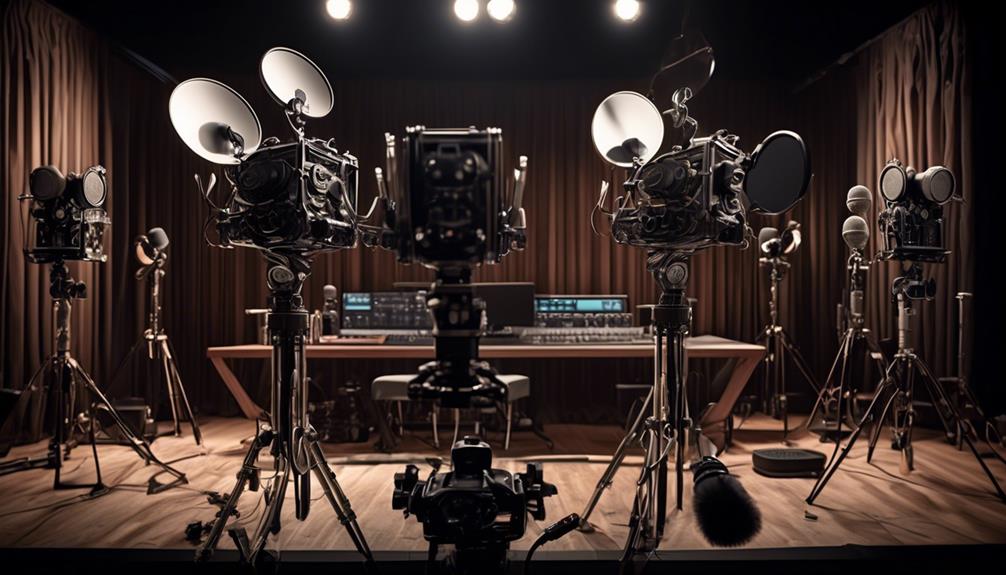
Recording in stereo offers a more immersive experience for the audience by capturing ambience and background noise realistically. This provides a rich and natural sound field, making it ideal for live music or scenes that require capturing the authentic ambiance of a setting.
However, it's important to note that slight movements during recording can affect the stereo image, necessitating careful attention to positioning and stability.
While stereo recordings excel at capturing the depth and breadth of sound, they may not be the best choice for recording dialogue and vocals, which often require flexibility in post-production. Mono recordings allow for precise placement of sound in the stereo sound stage and can be enhanced by mixing in stereo ambience and background noise. This approach enhances realism while avoiding distractions from a wandering stereo image.
Ultimately, the decision to use stereo or mono recording should be based on the specific needs of the project and the desired outcome, balancing the immersive qualities of stereo with the flexibility of mono in post-production.
Pros and Cons of Mono Recording
When considering the advantages and disadvantages of mono recording, it becomes evident that this technique offers distinct benefits for capturing sound from a specific source. Mono recording techniques provide clear audio and eliminate background noise, making it ideal for focusing on specific sounds such as dialogue or vocals. Additionally, mono recording allows for easy panning and placement of sound during post-production, offering flexibility in creating a precise sound stage. Moreover, when recording vocals in music, mono techniques ensure a comfortable listening experience, preventing distracting wandering stereo images and enhancing the listener's focus.
However, there are drawbacks to mono recording. It may lack the immersive ambiance and realistic background noise captured by stereo recording, potentially requiring additional mixing of stereo ambience in post-production for a wider sound field. Furthermore, mono recording may not fully represent the natural ambiance of the recording environment and could result in an unbalanced recording when capturing sound from a wide stage or environment. It may also not be suitable for situations where a wide sound field needs to be accurately captured.
Impact on Film Sound Quality
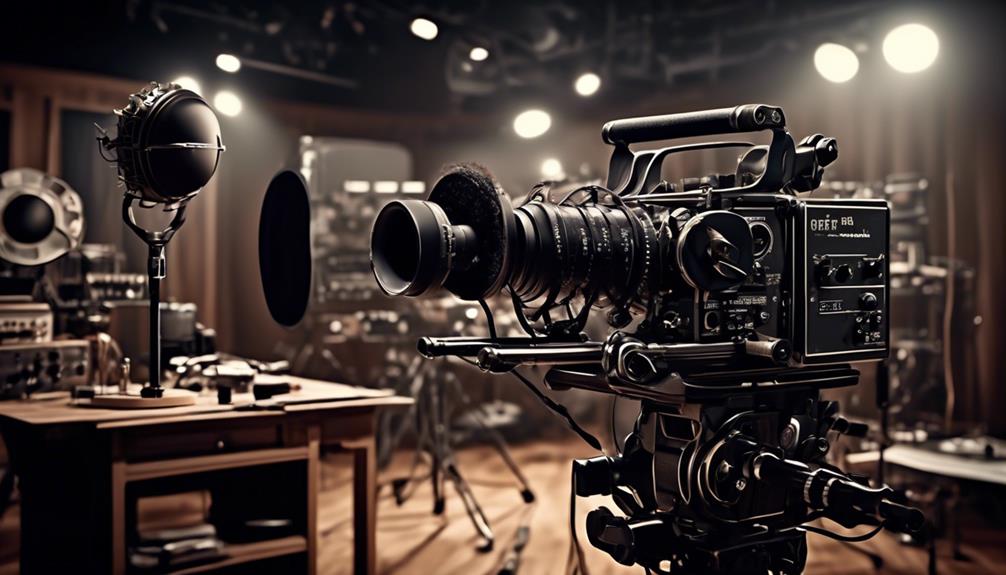
For a truly immersive audio experience in film, the choice between stereo and mono recording has a significant impact on sound quality. When considering sound design, stereo microphones excel in capturing a wide sound field, providing a more natural ambiance and depth to the audio. This is particularly beneficial for creating a sense of space and realism in film soundtracks.
In contrast, mono microphones are ideal for focusing on specific sound sources, such as dialogue or individual sound effects. This precision in capturing singular sound sources is crucial for maintaining clarity and reducing background noise in film soundtracks.
When it comes to live music settings or capturing environmental sounds, stereo recording can significantly enhance the overall sound quality by accurately representing the spatial characteristics of the recording environment. However, for dialogue and vocals, mono recording offers greater flexibility in post-production for precise placement in the stereo sound stage and seamless panning, ultimately contributing to a higher quality sound design in film.
Making the Right Choice
What factors should be considered when deciding between mono and stereo microphones for recording? When making the decision between mono and stereo microphones for recording, it's essential to consider several key factors to ensure the best outcomes for your project. Here are some important considerations for making the right choice:
- Sound Source and Environment: Assess the specific sound source and the environment where the recording will take place. This will help determine whether a mono or stereo microphone is better suited for capturing the desired audio.
- Flexibility in Post-Production: Consider the flexibility needed in post-production. Mono recordings offer more flexibility for precise placement of sound in the stereo sound stage, making them ideal for dialogue, vocals, and music production.
- Immersive Experience: If the goal is to capture a wider and more natural sound field to provide an immersive experience, stereo microphones are the preferred choice, especially for scenarios like live music on a wide stage.
Frequently Asked Questions
Should Film Audio Be Mono or Stereo?
When capturing film audio, we prioritize audio quality to enhance the viewer's experience. Factors like the specific sound source and recording environment determine whether mono or stereo recording is better.
Mono microphones are ideal for focusing on a single direction and eliminating background noise, ensuring clear audio in scenarios like outdoor interviews.
In contrast, stereo microphones capture a more natural, wide-sounding recording, making them suitable for live music on a wide stage.
Should I Record on Mono or Stereo?
When deciding between mono or stereo recording, we prioritize sound quality. It's essential to consider the specific audio source and environment.
Mono captures precise, focused sound, ideal for eliminating background noise.
Stereo offers a natural, immersive ambiance, perfect for wide stages.
Both have their strengths, and understanding the unique demands of each scenario ensures optimal sound quality in film recording.
Do Mono Records Sound Better?
We've explored the benefits of stereo recording. It's like having a symphony of sound in your ears! Stereo mics create a rich, immersive audio experience, capturing a wide sound field and natural ambiance.
This is perfect for film to fully immerse the audience in the scene. Stereo recording enhances depth, making it sound better and more realistic. It's like bringing the whole environment into the room with you.
Do Voice Actors Record in Mono or Stereo?
When it comes to voiceover techniques, the choice between mono and stereo recording depends on the desired sound quality and the specific project requirements.
In voice acting, mono recording is often preferred due to its precise sound placement and ease of post-production manipulation. This allows for enhanced control over the voice actor's performance and the overall audio experience.
Ultimately, the decision between mono and stereo recording for voice actors depends on the desired outcome and the specific needs of the project.
What is the Best Recording Technique for Capturing Rain Sounds in Films?
When it comes to capturing the soothing sound of rain for films, the best recording technique is to dive into field recording. This involves heading outdoors during or after a rainstorm to capture the authentic and natural sounds of rain. Using high-quality microphones and equipment can help achieve the best results.
Conclusion
In conclusion, whether to record in stereo or mono for film ultimately comes down to the specific needs of the project and the desired outcome. Understanding the pros and cons of each recording method is crucial in making the right choice.
Both stereo and mono recording have their own strengths and weaknesses, and it's important to consider the impact on the overall sound quality of the film.
Ultimately, the decision should be based on what'll best serve the film's sound requirements.

